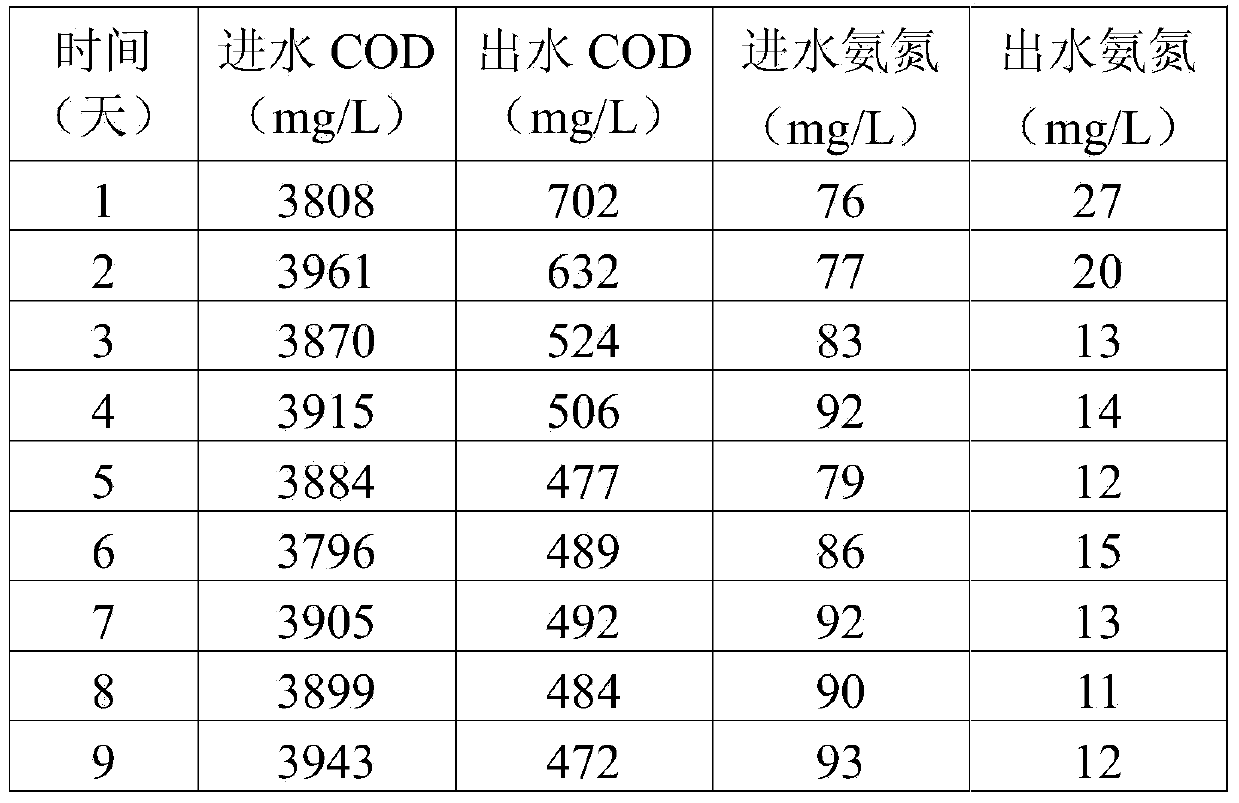Rhodococcus ruber strain and application thereof in treatment of wastewater containing organic pollutants
A technology of organic pollutants, Rhodococcus rubrum, applied in biological water/sewage treatment, water/sludge/sewage treatment, water pollutants, etc. , environmental hazards and other issues, to achieve the effect of protecting health, low production and use costs, and protecting the ecological environment
- Summary
- Abstract
- Description
- Claims
- Application Information
AI Technical Summary
Problems solved by technology
Method used
Image
Examples
Embodiment 1
[0044] Obtaining and Identification of Example 1 Rhodococcus Erythrococcus ZHY1-6
[0045] 1. Acquisition and identification of strain ZHY1-6
[0046] Take oil-contaminated sludge from Changqing Oilfield, with a salt content of about 3% (mass percentage), take 2g of sludge and add it to basal salt medium, add 5g of crude oil to 100mL of basal salt medium, 37°C, 200 During the cultivation process, observe that the color of the black crude oil in the shake flask gradually becomes lighter until the crude oil is degraded to a minimum, then take 1 mL of the bacterial liquid and inoculate it in the same medium, and repeat the acclimatization and enrichment culture for 3 times.
[0047] Then inoculate 1mL of the enriched bacterial solution to inoculate the cells containing phenol, C 18 In the basal salt medium with alkanes and naphthalene as the only carbon source, the same enrichment culture was carried out for 3 times, and then 1 mL of the bacterial solution was taken for gradient...
Embodiment 2
[0063] Example 2 Degradation of different compounds by bacterial strain ZHY1-6 in high-salt basal liquid medium
[0064] Pick a single colony of strain ZHY1-6 and inoculate it in 100mL liquid medium (10g / L peptone, 5g / L yeast extract powder, 10g / L NaCl, 1g / L glucose, pH7.0-7.2), 37°C, 180 rpm Shake culture for 48 hours per minute to obtain fresh bacterial liquid.
[0065] In 100mL basal salt medium (same as the salt basal medium in Example 1), containing 2% NaCl (g / V), add phenol, 200mg / LC 18 Alkanes, 200mg / L naphthalene, inoculated with 5mL of fresh bacterial solution, 35°C, 180 rpm, cultured on a shaking table for 72 hours, and samples were taken to determine the degradation rate of the compound.
[0066] Table 1 Degradation rate of strain ZHY1-6 to different compounds
[0067] substrate phenol C 18 alkanes naphthalene Degradation rate(%) 91.6 68.5 <55
Embodiment 3
[0068] Example 3 Degradation effect of bacterial strain ZHY1-6 in high-salt phenol-containing pharmaceutical wastewater
[0069] Pick a single colony of strain ZHY1-6 and inoculate it in 100mL liquid medium (10g / L peptone, 5g / L yeast extract powder, 10g / L NaCl, 1g / L glucose, pH7.0-7.2), 37°C, 180 rpm Shake culture for 48 hours per minute to obtain fresh bacterial liquid.
[0070] Take 100mL of high-salt phenol-containing pharmaceutical wastewater with a salt content of about 2%, and detect that the phenol content is 181mg / L.
[0071] Insert 5mL of fresh bacterial solution, place it at 35°C, and culture it on a shaker at 160 rpm. Samples were taken to determine the degradation rate of the compound after 2 days, 3 days, and 4 days of culture.
[0072] Table 2 Removal of phenol by strain ZHY1-6 in high-salt phenol-containing wastewater
[0073] substrate Culture for 2 days 3 days 4 days Degradation rate(%) 61.4 78.6 89.1
PUM
 Login to View More
Login to View More Abstract
Description
Claims
Application Information
 Login to View More
Login to View More - R&D
- Intellectual Property
- Life Sciences
- Materials
- Tech Scout
- Unparalleled Data Quality
- Higher Quality Content
- 60% Fewer Hallucinations
Browse by: Latest US Patents, China's latest patents, Technical Efficacy Thesaurus, Application Domain, Technology Topic, Popular Technical Reports.
© 2025 PatSnap. All rights reserved.Legal|Privacy policy|Modern Slavery Act Transparency Statement|Sitemap|About US| Contact US: help@patsnap.com



